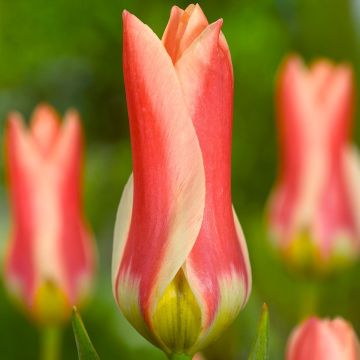Shipping country and language
Your country of residence may be:
Your country of residence is:
For a better user experience on our website, you can select:
Your shipping country:
Andorra
Austria
Belgium
Bulgaria
Canada
Chile
Croatia
Cyprus
Czechia
Denmark
Estonia
Finland
France
Germany
Greece
Hungary
Iceland
Ireland
Italy
Latvia
Lithuania
Luxembourg
Malta
Monaco
Netherlands
Poland
Portugal
Romania
Slovakia
Slovenia
Spain
Sweden
Switzerland
United Kingdom
We only deliver seed and bulb products to your country. If you add other products to your basket, they cannot be shipped.
Language:
French
German
Spanish
English
My Account
Hello
My wish lists
Plantfit
Log in / Register
Existing customer?
New customer?
Create an account to track your orders, access our customer service and, if you wish, make the most of our upcoming offers.


Tulipe simple tardive Dreamland
Tulipa Dreamland - Early simple Tulip
Tulipa Dreamland
Tulip
Unfortunately, not all of them have bloomed." Analyse de la traduction : La traduction est correcte sur le plan linguistique et respecte le ton du texte original. Aucune faute d'orthographe, de grammaire ou de structure n'est présente. La traduction rend bien l'idée que toutes les fleurs n'ont pas fleuri.
Anne-Sophie D., 10/05/2018
Order in the next for dispatch today!
Dispatch by letter from €3.90.
Delivery charge from €5.90 Oversize package delivery charge from €6.90.
More information
This item is not available in your country.
Schedule delivery date,
and select date in basket
This plant carries a 6 months recovery warranty
More information
We guarantee the quality of our plants for a full growing cycle, and will replace at our expense any plant that fails to recover under normal climatic and planting conditions.
From €5.90 for pickup delivery and €6.90 for home delivery
Express home delivery from €8.90.

Does this plant fit my garden?
Set up your Plantfit profile →
Description
The late single tulip 'Dreamland' is a spectacular and very bright variety. It bears a lush flower with very cheerful colours, with a rounded cup shape and cream-white petals flamed with pink-red on a tall and sturdy stem. Over time the pink gradually invades the flower, creating a fabulous display in borders or a vase. It blooms at the end of the tulip season, in late May.
The 'Dreamland' tulip belongs to the Liliaceae family. Originally horticultural, it is currently classified in Division 5, which is characterised by late flowering. It will reach a height of 60 to 65 cm (24 to 26in) when in bloom. The large, round flowers are perched on weather-resistant stems, well above the broadly lanceolate leaves. They are vibrant and healthy, cream-white with wide invasions of bright pink-red, the base of the petals remains cream-white, and the inside of the cup is pink. It flowers in May - June, making it useful in the garden.
Late single tulips are well-known for their wealth of colours and strong and resistant flowers, suitable for borders and cut flowers. They are among the most planted varieties, unmatched for bringing spring colour to pots or sunny gardens. Remember to consider the height and flowering period when designing your borders, as these can vary significantly from one cultivar to another. It is a good idea to plant a few more bulbs for superb long-lasting cut flowers.
About botanical species: Tulip species are found in most of the Old World, from Western Europe to China and Japan, through Eastern Europe, Asia Minor, and Central Asia. Their distribution area also includes North Africa and the Indian subcontinent. The centre of diversity of the genus is the Pamir and Hindukush Mountains and the steppes of Kazakhstan.
There are various wild species, many of which are endangered. These are either large tulips from cultivated fields, the most well-known being the Agen tulip (Tulipa agenensis), or small tulips found in wooded areas or among rocks in the mountains. When cultivated, they are called "botanical tulips," and one of the most common is the wild tulip (Tulipa sylvestris), which often used to grow sheltered by vines and whose subspecies australis is known as the southern tulip.
Tulipa Dreamland - Early simple Tulip in pictures


Plant habit
Flowering
Foliage
Botanical data
Tulipa
Dreamland
Liliaceae
Tulip
Cultivar or hybrid
Other Single Tulips
Planting and care
Plant Dreamland tulips in a sunny or partially shaded spot from late September to December for spring flowering, in well-drained and deeply loosened soil, 15 cm (6in) deep. Space the bulbs 10 cm (4in) apart without touching each other to create a mass effect that will give a more decorative appearance. They are very easy to care for, just water regularly, especially during dry winters, and cut the flower stalks after flowering. Allow the leaves to dry completely before cutting them.
Planting period
Intended location
Care
- , onOrder confirmed
Reply from on Promesse de fleurs
Tulips
Haven't found what you were looking for?
Hardiness is the lowest winter temperature a plant can endure without suffering serious damage or even dying. However, hardiness is affected by location (a sheltered area, such as a patio), protection (winter cover) and soil type (hardiness is improved by well-drained soil).

Photo Sharing Terms & Conditions
In order to encourage gardeners to interact and share their experiences, Promesse de fleurs offers various media enabling content to be uploaded onto its Site - in particular via the ‘Photo sharing’ module.
The User agrees to refrain from:
- Posting any content that is illegal, prejudicial, insulting, racist, inciteful to hatred, revisionist, contrary to public decency, that infringes on privacy or on the privacy rights of third parties, in particular the publicity rights of persons and goods, intellectual property rights, or the right to privacy.
- Submitting content on behalf of a third party;
- Impersonate the identity of a third party and/or publish any personal information about a third party;
In general, the User undertakes to refrain from any unethical behaviour.
All Content (in particular text, comments, files, images, photos, videos, creative works, etc.), which may be subject to property or intellectual property rights, image or other private rights, shall remain the property of the User, subject to the limited rights granted by the terms of the licence granted by Promesse de fleurs as stated below. Users are at liberty to publish or not to publish such Content on the Site, notably via the ‘Photo Sharing’ facility, and accept that this Content shall be made public and freely accessible, notably on the Internet.
Users further acknowledge, undertake to have ,and guarantee that they hold all necessary rights and permissions to publish such material on the Site, in particular with regard to the legislation in force pertaining to any privacy, property, intellectual property, image, or contractual rights, or rights of any other nature. By publishing such Content on the Site, Users acknowledge accepting full liability as publishers of the Content within the meaning of the law, and grant Promesse de fleurs, free of charge, an inclusive, worldwide licence for the said Content for the entire duration of its publication, including all reproduction, representation, up/downloading, displaying, performing, transmission, and storage rights.
Users also grant permission for their name to be linked to the Content and accept that this link may not always be made available.
By engaging in posting material, Users consent to their Content becoming automatically accessible on the Internet, in particular on other sites and/or blogs and/or web pages of the Promesse de fleurs site, including in particular social pages and the Promesse de fleurs catalogue.
Users may secure the removal of entrusted content free of charge by issuing a simple request via our contact form.
The flowering period indicated on our website applies to countries and regions located in USDA zone 8 (France, the United Kingdom, Ireland, the Netherlands, etc.)
It will vary according to where you live:
- In zones 9 to 10 (Italy, Spain, Greece, etc.), flowering will occur about 2 to 4 weeks earlier.
- In zones 6 to 7 (Germany, Poland, Slovenia, and lower mountainous regions), flowering will be delayed by 2 to 3 weeks.
- In zone 5 (Central Europe, Scandinavia), blooming will be delayed by 3 to 5 weeks.
In temperate climates, pruning of spring-flowering shrubs (forsythia, spireas, etc.) should be done just after flowering.
Pruning of summer-flowering shrubs (Indian Lilac, Perovskia, etc.) can be done in winter or spring.
In cold regions as well as with frost-sensitive plants, avoid pruning too early when severe frosts may still occur.
The planting period indicated on our website applies to countries and regions located in USDA zone 8 (France, United Kingdom, Ireland, Netherlands).
It will vary according to where you live:
- In Mediterranean zones (Marseille, Madrid, Milan, etc.), autumn and winter are the best planting periods.
- In continental zones (Strasbourg, Munich, Vienna, etc.), delay planting by 2 to 3 weeks in spring and bring it forward by 2 to 4 weeks in autumn.
- In mountainous regions (the Alps, Pyrenees, Carpathians, etc.), it is best to plant in late spring (May-June) or late summer (August-September).
The harvesting period indicated on our website applies to countries and regions in USDA zone 8 (France, England, Ireland, the Netherlands).
In colder areas (Scandinavia, Poland, Austria...) fruit and vegetable harvests are likely to be delayed by 3-4 weeks.
In warmer areas (Italy, Spain, Greece, etc.), harvesting will probably take place earlier, depending on weather conditions.
The sowing periods indicated on our website apply to countries and regions within USDA Zone 8 (France, UK, Ireland, Netherlands).
In colder areas (Scandinavia, Poland, Austria...), delay any outdoor sowing by 3-4 weeks, or sow under glass.
In warmer climes (Italy, Spain, Greece, etc.), bring outdoor sowing forward by a few weeks.



















